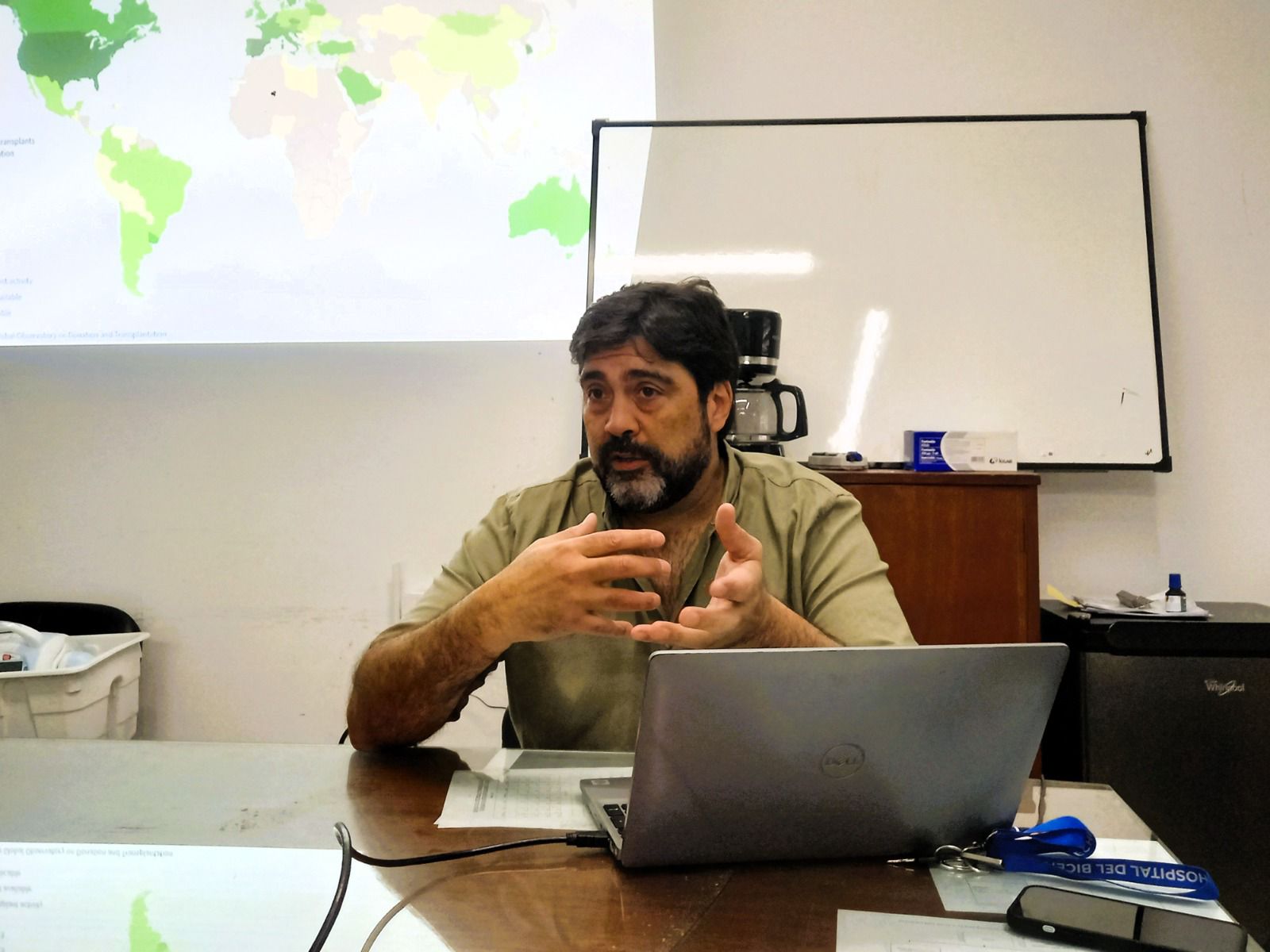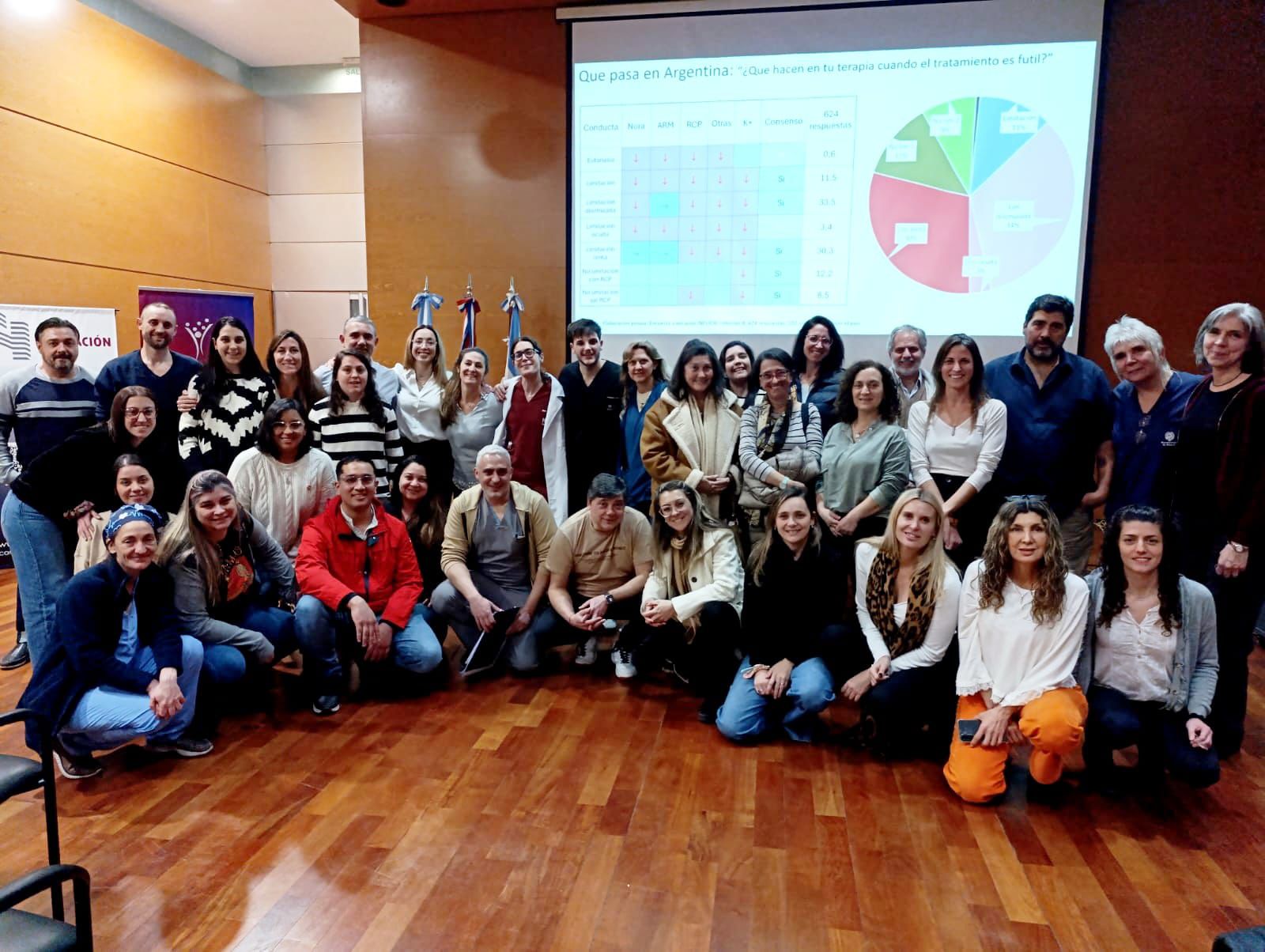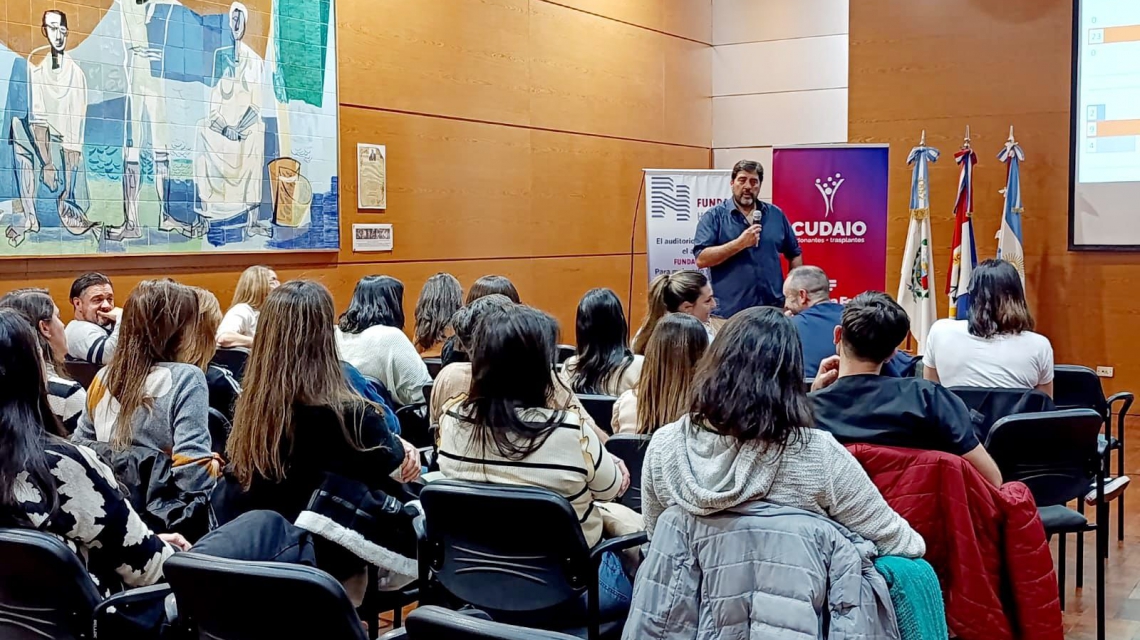The Single Centre for Organ and Tissue Donation, Removal and Implantation (Cudaio), under the Ministry of Health, is moving forward with the implementation of a protocol for donation after cardiac death, with training for healthcare teams. The training sessions were led by Pablo Centeno, director of Incucai's Hospital Training Programme for Procurement and Transplantation.
In this context, he emphasised the possibilities for hospitals to implement the Incucai protocol, which allows for the removal of organs once death has been certified due to irreversible cessation of cardiocirculatory functions. Controlled asystole donation has been the basis for a promising increase in procurement in recent years, for example in the province of Buenos Aires, as well as in more advanced countries in this field for the past couple of decades.

Cudaio's director, Cecilia Andrada, said that "the history of organ transplantation and donation has had many milestones and developments that have made it possible to save more lives and provide a better quality of life for more transplant recipients. One of them was the implementation of controlled asystole donation. In Spain, which is a leader in donation and transplantation, this strategy is very widespread and has allowed them to achieve a significant increase in the number of processes: last year more than half came from this form of procurement".
Regarding the local experience, he remarked that "as a donor province we have worked steadily incorporating more and more hospitals and localities to procurement, private providers and we have also achieved a better monitoring and notification of potential donors".
The donation in asystole, he added, "will allow us to continue increasing the number of operations, which is why we promote these training sessions for professionals, inviting specialists who carry out this strategy in Argentina and around the world with great success. In this line, he valued the training with Dr. Centeno, who has been the protagonist of successful experiences in the application of donation in asystole, in the José María Cullen Hospital, in the city of Santa Fe; and in the Clemente Álvarez Emergency Hospital (Heca), dependent on the Municipality of Rosario.
Training

Members of Cudaio's operational ward and medical therapists from the Cullen Hospital participated in the training session in the city of Santa Fe. During the meeting, Centeno explained that half of the provinces have already achieved some processes by controlled asystole. "For Argentina and Latin America, it is a relatively new way of generating organ donors and addressing the deficit of access to transplantation for people on the waiting list. Training is important and that is why we came to this hospital, where a few cases have already been achieved, and where there is a great technical capacity. Santa Fe is a very important province on the national scene".
The head of the Intensive Care Unit, Néstor Carrizo, emphasised that "Dr. Centeno's contribution is an advance in the adequacy of the therapeutic effort and the possibility of asystole donation. It is closely related to ethical and fair medical activity and addresses a problem that we live daily. Cullen's intensive care unit is highly complex, and we receive patients who could fit the criteria for this type of donation, which is implemented in other countries with good results.
The training in Rosario, meanwhile, was attended by doctors and other professionals from most of Heca's services. Silvio Pulcinelli, head of the Procurement Unit of the hospital, emphasised that they have already carried out controlled asystole donation operations, but indicated that "the main objective is to transform it into a regular procedure, for which all the teams are prepared. That's why we value these training opportunities to learn from the most advanced practices.
And he added about future possibilities: "the perspective is of a real qualitative leap in the problem of procurement and at the same time a challenge for the health system, which implies a new approach and impetus for the donation-transplantation process".
